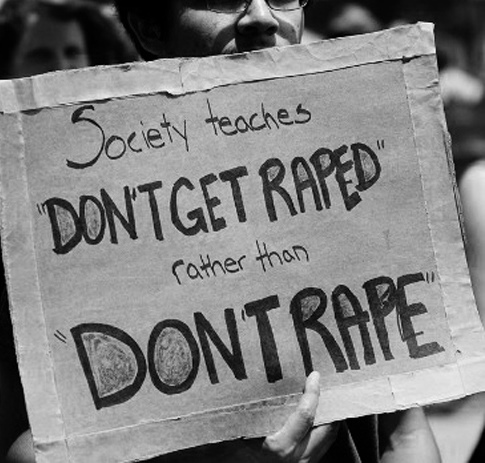Pornography
Porn fuels rape culture
On the heels of a number of alleged sexual assaults at the University of Ottawa, the topic of “rape culture” is again in the headlines. Additionally, a U of O student leader Anne-Marie Roy revealed that in a Facebook conversation, several male student leaders had made sexually explicit comments about her—with one comment stating that she should be “sexually punished.” These new incidents bring to mind incidents occurring last year at St. Mary’s University, in which a frosh-week chant had male students chanting support for non-consensual, underage sex—“U is for underage! N is for no consent!”—and a variety of other disgusting and explicit lyrics. In response, a new group at the University of Ottawa has launched a website titled “Let’s Talk About Rape Culture.”
Yes, let’s do that.
Firstly, there really should be no confusion regarding what is and what is not rape, in spite of the misogynist, sexually violent filth such as “Blurred Lines” pumped out by pop stars such as Robin Thicke. No means no. Drunk or otherwise impaired means no. Saying nothing means no. Anything—anything—other than an explicit, crystal-clear invitation means no. Are there “different types” of rape? Sure. But any form at all of non-consensual sex is still rape, and should be treated as such, both legally and otherwise. Rape is not just “a mistake” you make. It is sexual assault.
Secondly, there is an obvious underlying reason for why many people are beginning to trivialize sexual violence: pornography. Let me explain.
The use of pornography in our constantly online, wired-in 21st century culture is almost completely pandemic. By the time young adulthood is reached, 64-68 percent of young adult men and 19 percent of women are using porn every single week. An additional 17 percent of men and 30 percent of women are using porn one to two times a month. In other words, if you are currently not using pornography, you are in a minority.
How does this trivialize sexual violence? Consider these statistics, from a new anti-porn group called Fight the New Drug: “A few years ago, a team of researchers looked at the most popular porn films—the ones bought and rented most often. Of the 304 scenes, 88% contained physical violence. 49% contained verbal aggression. In total, only one scene in 10 didn’t contain any aggression, and the typical scene averaged 12 physical or verbal attacks. One action-packed scene managed to fit in 128.”
There is a wealth of research illustrating how pornography literally functions like a drug, rewiring the brains of those who consume it regularly—and this is, obviously, having an impact on how men view women. For example, new research “has much to say concerning what happens when adults watch or read violent pornographic materials—mainly, that sex and violence present a particularly harmful mix. Viewing such materials can increase males’ acceptance of sexual and other types of aggression toward females. Males who have viewed violent pornography are also more likely to believe such myths as that women like being sexually overpowered or raped, ‘no’ really means ‘yes,’ rape victims’ injuries are not severe, or wife‐battering is acceptable. Further, pornographers rarely depict sexual aggressors and perpetrators negatively, or show them being punished for their sexual aggression.”
It should be transparently obvious that a constant diet of pornography, which is now pervaded with vicious and disgusting sexual violence, will begin to inform the minds and appetites of those who consume it. Sexuality is an extremely fragile thing, and the cultural infusion of violence into what was once known as “making love” is undoubtedly contributing to new, relaxed attitudes towards sexual violence. If people are constantly consuming sexual violence as entertainment (and they are), it can be no surprise that they consider it “not a big deal.”
Which leads me to one final point—the smash hit bestseller, 50 Shades of Grey, which took bookstores and Walmart racks across North America by storm. I was shocked that so few commentators came out to condemn this trash—the idea that a book celebrating a sexually abusive relationship between a dominant male and a girl whom he delighted in inflicting all sorts of depraved physical violence on could “assist people’s marriages” (because that’s what’s missing from people’s marriages—physical violence) or be viewed as anything less than the promotion of sexual sadism is absolutely repulsive. In a culture already concerned with issues of sexual abuse, enormous sexual pressures on girls from a very young age, and the growing lack of male role models (like fathers), this book’s message is an extremely poisonous one—it’s okay for a boy to inflict pain on a girl during a sexual relationship. It’s okay for a boy to ask a girl if he can inflict pain on her. Violence—or as the new sex fiends revealingly put it, “bondage-sado-masochism”—is acceptable in what is supposed to be a loving relationship. As if cultural pressures on young girls weren’t bad enough, the pornographer responsible for this new phenomenon is responsible for introducing a new one: acceptance of sadism inside of a sexual relationship.
Pornography fuels the rape culture. Pornography is now a massive industry that provides a depraved buffet of rape, sadism, verbal abuse, sexual humiliation, and other sexual violence to the millions of men and women who now consume it as a matter of course. If we as a culture have decided that sexual assault is entertaining or stimulating, we can hardly be surprised when we as a culture have decided that sexual assault is trivial.








